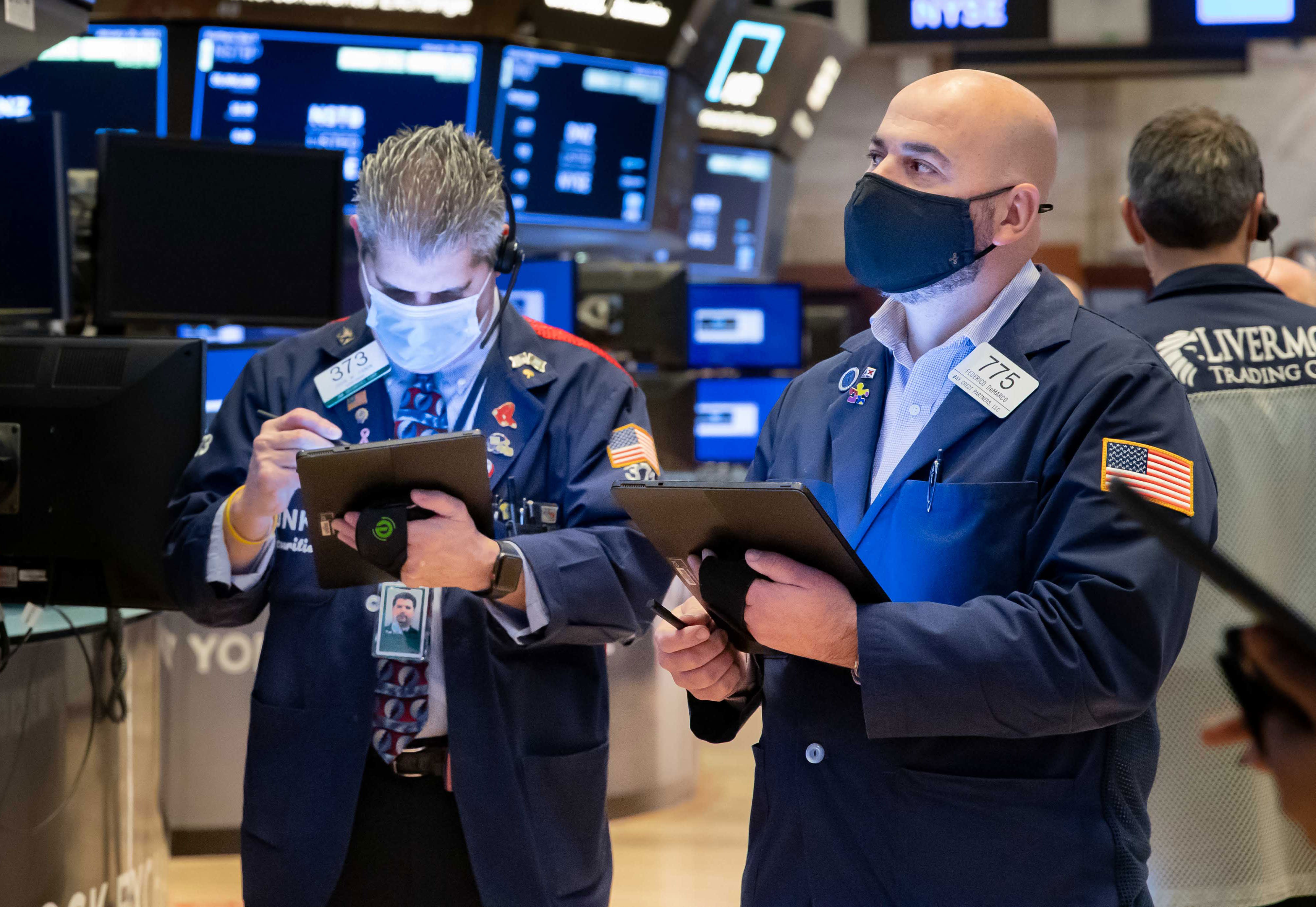Dow slips from a record in volatile trading even after a surprise jump in retail sales

The Dow Jones Industrial Average swung in volatile trading on Wednesday as investors weighed improving economic data with rising inflation expectations.
The blue-chip Dow erased a 150-point loss and briefly turned positive, supported by a jump in Verizon and Chevron shares. The average last traded 60 points lower. The S&P 500 lost about 0.4%, led by technology and materials. The tech-heavy Nasdaq Composite fell 1%.
Dow-member Verizon was among the biggest gainers after Warren Buffett’s Berkshire Hathaway revealed a sizable stake in the telecom giant. The shares climbed 3.7% after the latest filing showed Berkshire bought more than $8 billion worth of the stock in the fourth quarter, making Verizon one of the conglomerate’s top six largest holdings.
Chevron jumped 3.5% as Berkshire revealed a large stake in the energy company as well last quarter.
The weakness in the broader market came as data showed retail sales surged 5.3% in January, blowing past a Dow Jones estimate of a 1.2% rise. The jump in consumer spending could further fuel inflation expectations, which have already pushed bond yields significantly higher recently.
Signs of a pickup in pricing pressures already emerged as the economy rebounds from the pandemic-induced recession with historic fiscal and monetary stimulus. The Labor Department said Wednesday the producer price index, a measure of the prices businesses receive for their goods and services, rose 1.3% in January, the biggest jump since the index began in December 2009.
The retail sales data “fits in perfectly with the present narrative of strong earnings/growth (and rising inflation) and will place further upside pressure on Treasury yields,” Adam Crisafulli, founder of Vital Knowledge, said in a note.
Treasury yields continued to grind higher Wednesday with the 10-year rate hitting a high of 1.33%, a level last seen in February 2020. The 30-year yield held steady after reaching its highest level in a year in the previous session.
Some on Wall Street believe higher rates could eventually prompt investors to rotate out of high-flying risk assets and into bonds, while also putting pressure on areas of the market, including tech, which have benefited from the low-rate environment.
“We are filling in a major gap from March of 2020. So long as we remain orderly and rates move for the right reasons, it’s short term okay,” said Gregory Faranello, head of U.S. rates trading at AmeriVet Securities. “But the Fed is watching. Should financial conditions begin to tighten with the move higher in rates, the Fed will react. And quickly.”
The benchmark 10-year rate tumbled to an all-time low of 0.318% in March amid a historic flight to bonds in the depth of the coronavirus crisis.
Elsewhere in the market, bitcoin topped $51,000 for the first time as its dizzying surge to new record highs continued.
Subscribe to CNBC PRO for exclusive insights and analysis, and live business day programming from around the world.




